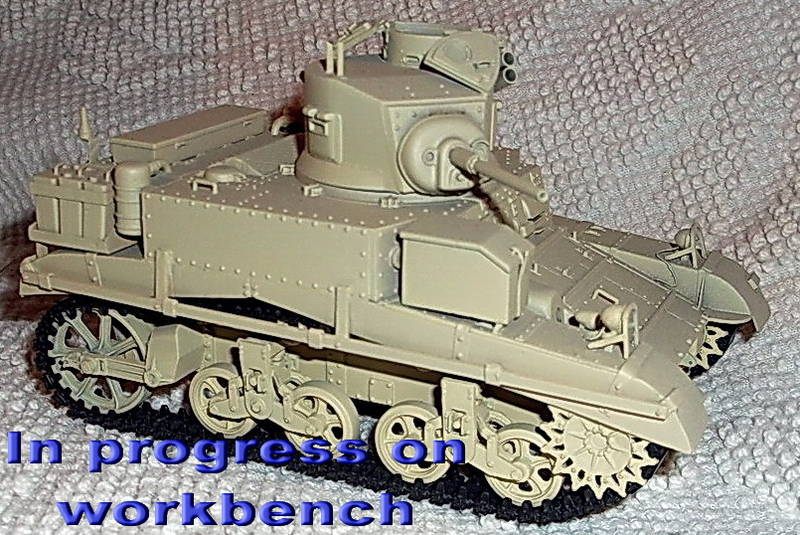OK, so this is from an old reference, Malcom Bellis' Datafile in British armoured formations 1939-45, produced sometime in the 80's I believe, yet it is still considered accurate.
5 RTR was part of 4 Bde, 7 Armd during May, June & July 1941. At all of these times it was either the second senior or senior regiment in the Bde and only senior when the regiment had been combined with 4 RTR due to losses, so you can assume they didn't change the markings for a period of under a month.
This tells us a couple of things, the first of which is that the regiment colour of the diamond would have been yellow, not blue!
If they did change the turret markings during the combined 4-5 RTR period (June 41) then the colour would be red.
The square on the fender is either the tactical sign or the formation sign. Normally, the tactical sign goes on the left side (looking at the front or back) and the formation sign on the right. The Formation sign is normally the highest unit which the vehicle is considered "under command", usually a division, but no lower than a brigade, in this case 7 Armd. The Tactical sign indicates where the vehicle's regiment is within the higher formation.
In the desert, it appears that the system was not always followed, witness the DIngo from 7 RTR with the tactical sign (& the brigade sign of the black Jerboa) on the right and the formation sign (a red jerboa) on the left.
_IF_ 5 RTR followed the same conventions as the Dingo, then the square is for the _formation_ sign and would be red but lacking the white circle & red jerboa of 7 Armd. On the other side would be the brigade symbol and the number 86 in a red square.
_IF_ they were supposed to be following the nominal orders of the time, the square is a red tactical sign lacking the numbers 86 and the Divisional sign would be on the other (right) fender.
The diamond indicates an HQ sqn vehicle and therefore the pennant should be a square in red. It obviously is two triangels, so it's not following the normal procedure and we are left to conjecture.
The fact that 4 & 5 RTR were amalgamated for a period suggests that whatever tanks remained after the battles of May 1941 were put together in whatever way made sense in the new ad hoc regiment. This vehicle may not have been the regimental commander's any longer, notwithstanding the diamond painted on the turret. The fact that there are two pennants indicates that it is a troop commander's vehicle. The triangles indicate A sqdn & if we can agree that neither pennant is yellow, then it is the vehicle of either the 1 Trp or 3 Trp commander and the lower pennant is either red or blue respectively. I believe the top pennant is black.
The use of orthochromatic and panchromatic film at the time makes identifying red, blue or even yellow very difficult, so it may not be possible to do better than this unless someone knows exactly what the photo represents form another source.
HTH
Paul


























